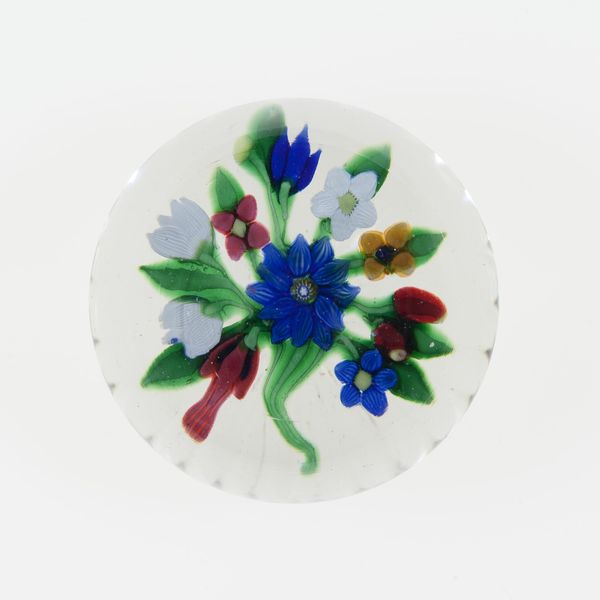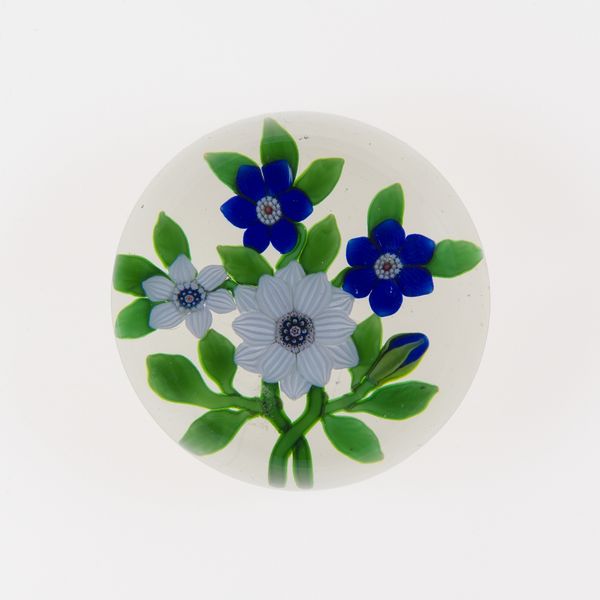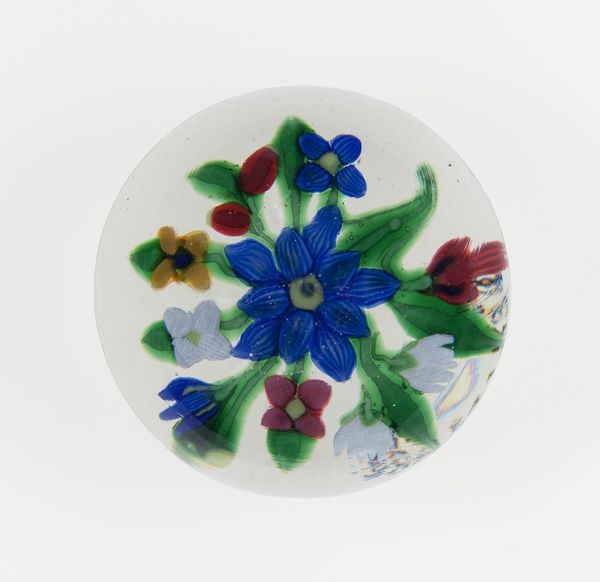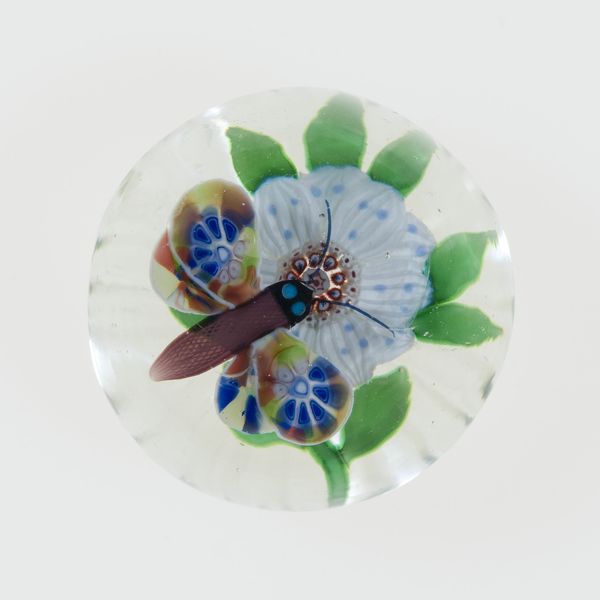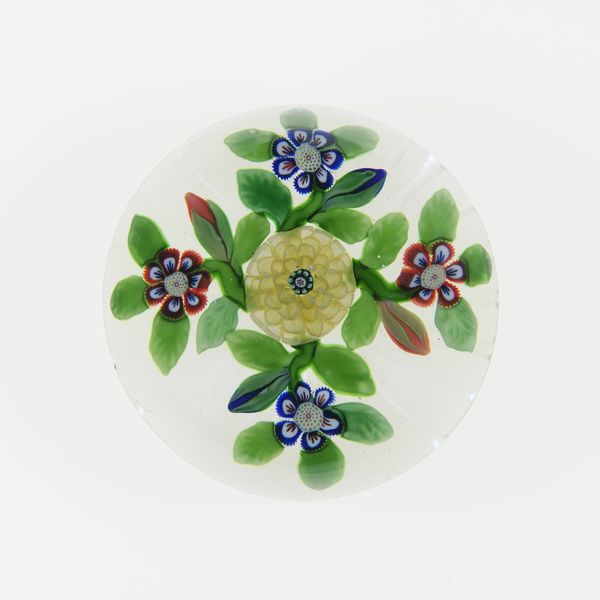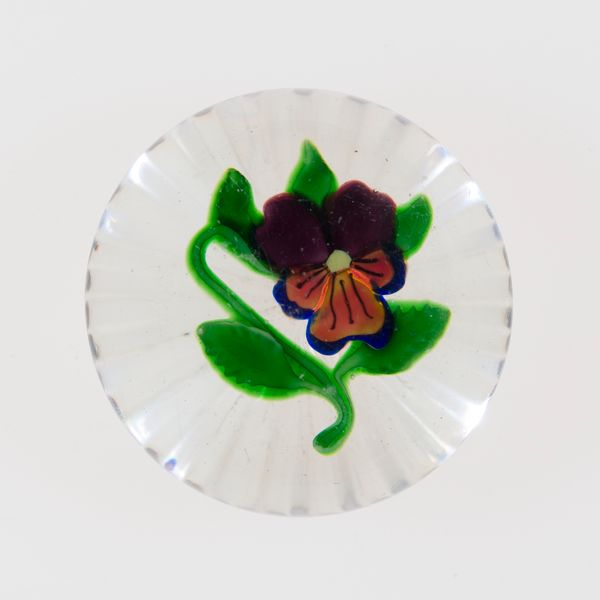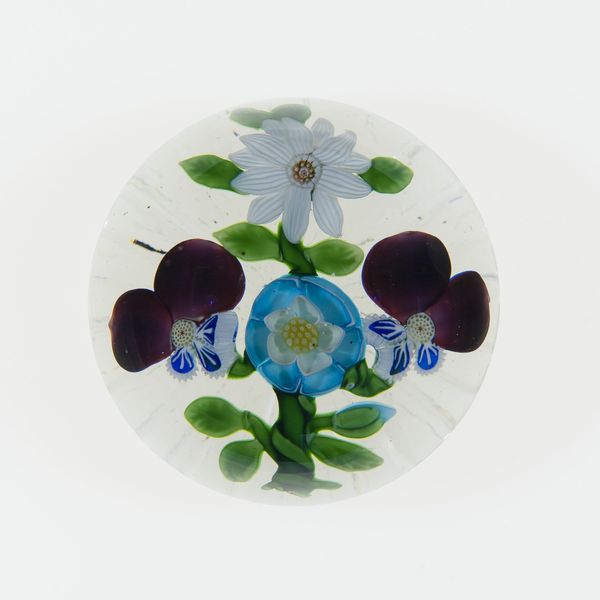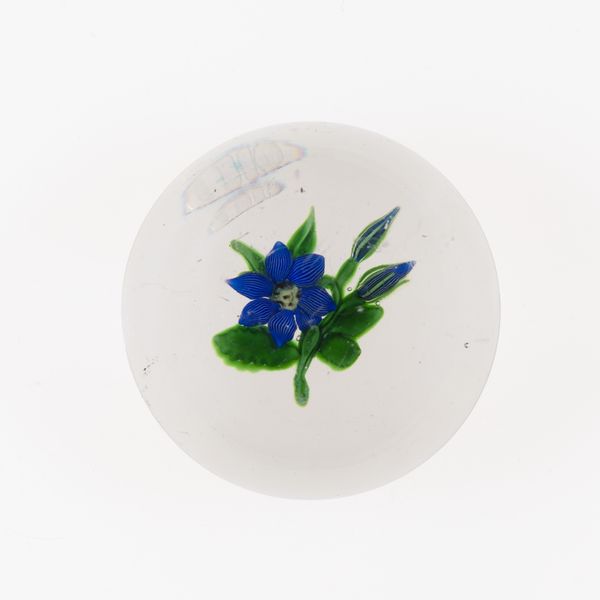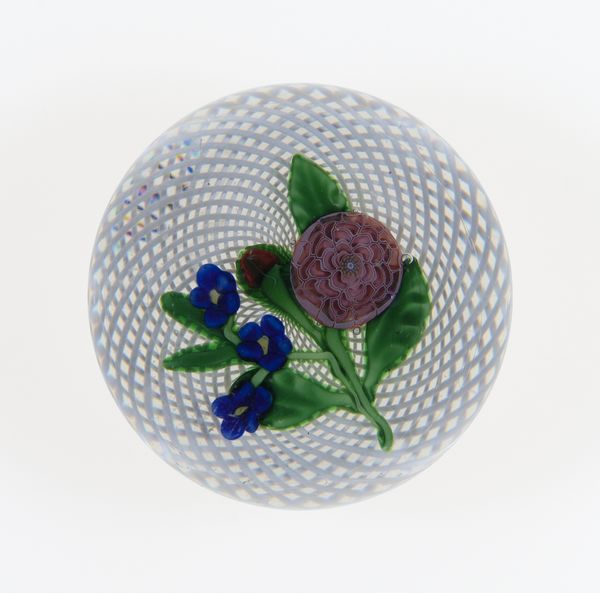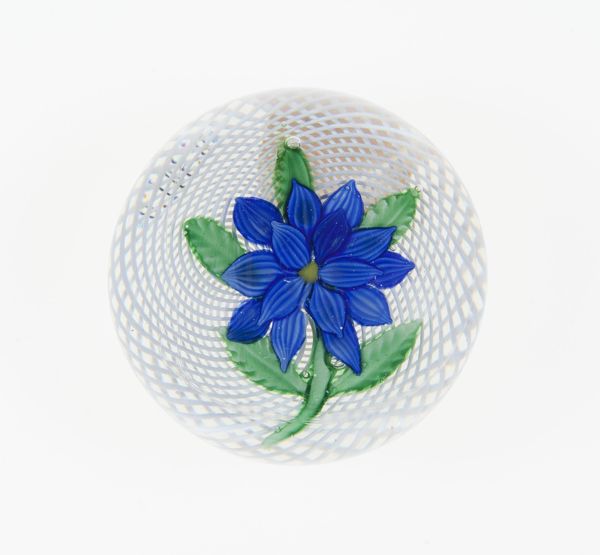
paper, glass
#
paper
#
glass
Dimensions: Diam. 8 cm (3 1/8 in.)
Copyright: Public Domain
Curator: This striking glass paperweight, attributed to the Compagnie de Saint Louis, was created sometime between 1845 and 1860. You can find it here at the Art Institute of Chicago. Editor: It's utterly captivating! That vivid cobalt blue flower, suspended so perfectly within the glass, almost seems to breathe. Curator: What interests me is the process. How does one achieve such intricate detail within a solid form? The controlled heating, the layering of molten glass… it speaks to immense skill and a deep understanding of the material's properties. Considering the date, one has to wonder about the labor practices in place. Editor: I agree, the labor is something to consider, and I find it interesting how such functional objects transcend mere utility, entering the realm of art. They capture a particular fascination with nature and domestication popular at the time. Did owning one elevate one’s social standing? Curator: Possibly. Objects like these, while decorative, reflect a larger story about Victorian society and its relationship with both craft and industry. We can see glass-making transforming from artisanal workshop practices toward mechanized production during this period. Who has access to the equipment, where do the raw materials originate, what does this object say about power structures? Editor: Indeed. The symbolism inherent in the imagery cannot be ignored either; each flower had its language and, like a floral missive, such object came charged with hidden intentions of coded significance to the well versed owner, elevating a mundane paperweight to more important dimensions in Victorian domestic settings. Curator: These floral designs become commodities and carry a whole social semiotics through the drawing rooms in Paris. The techniques and styles themselves migrate and become accessible in department stores. What were their methods of marketing, which demographic did they target? These objects weren't always emblems of exclusivity and, instead, circulated in spaces outside aristocratic ownership. Editor: Examining it now, its clarity and depth are more poignant considering these aspects. A seemingly simple object that contains an intersection of materiality and manufacture in the late 1800s, now under the guise of paper and floral motif, gives this otherwise 'quaint' glass dome new dimension. Curator: Precisely. It becomes a lens, magnifying the socio-economic currents of its time. Editor: Well said, a fitting note to end on.
Comments
No comments
Be the first to comment and join the conversation on the ultimate creative platform.
